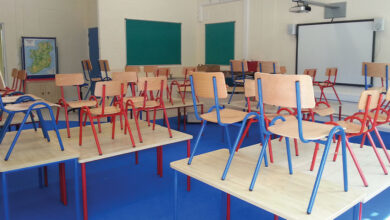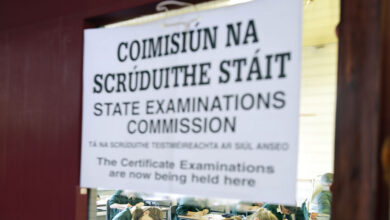Covid-19 and second-level education
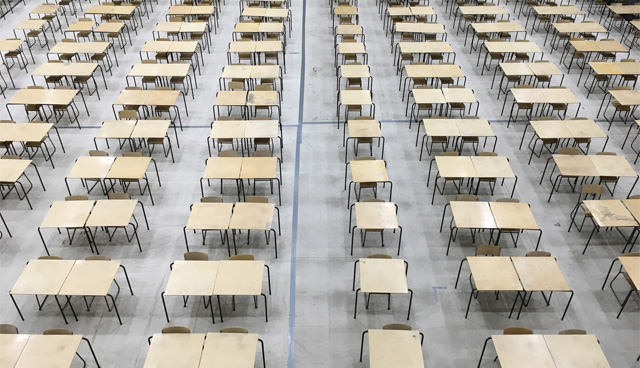
A report analysing the impact of the Covid-19 lockdown on second-level education has found access to technology and broadband to be the main factor informing the quality of responses to the pandemic.
Conducted by the Economic and Social Research Institute (ESRI) in partnership with the Department of Communications, Climate Action and the Environment and the Commission for Communications Regulation, Learning for all? Second-level education in Ireland during Covid-19 found that almost half of the school leaders surveyed reported broadband connectivity and access to ICT devices as issues in their schools’ responses to the Covid-19 closure of schools in March 2020.
Both of these issues were exacerbated in DEIS schools, schools in areas with lower coverage of high-speed broadband and lower household incomes. The study was conducted with the aim of establishing how the second-level education sector has responded to the challenges posed by the pandemic and how teaching and learning have been affected.
As schools were forced to adapt to closures and a lack of access to amenities, the research found that 53.5 per cent of schools had provided ICT equipment to their students as a result of the closures. 19.9 per cent of schools said that they were in the process of sourcing and acquitting equipment to do the same, while 13.3 per cent of schools had already provided ICT equipment prior to the pandemic and the same proportion of schools had not supplied any equipment and were in the process of doing so at the time of the report’s publication in June 2020.
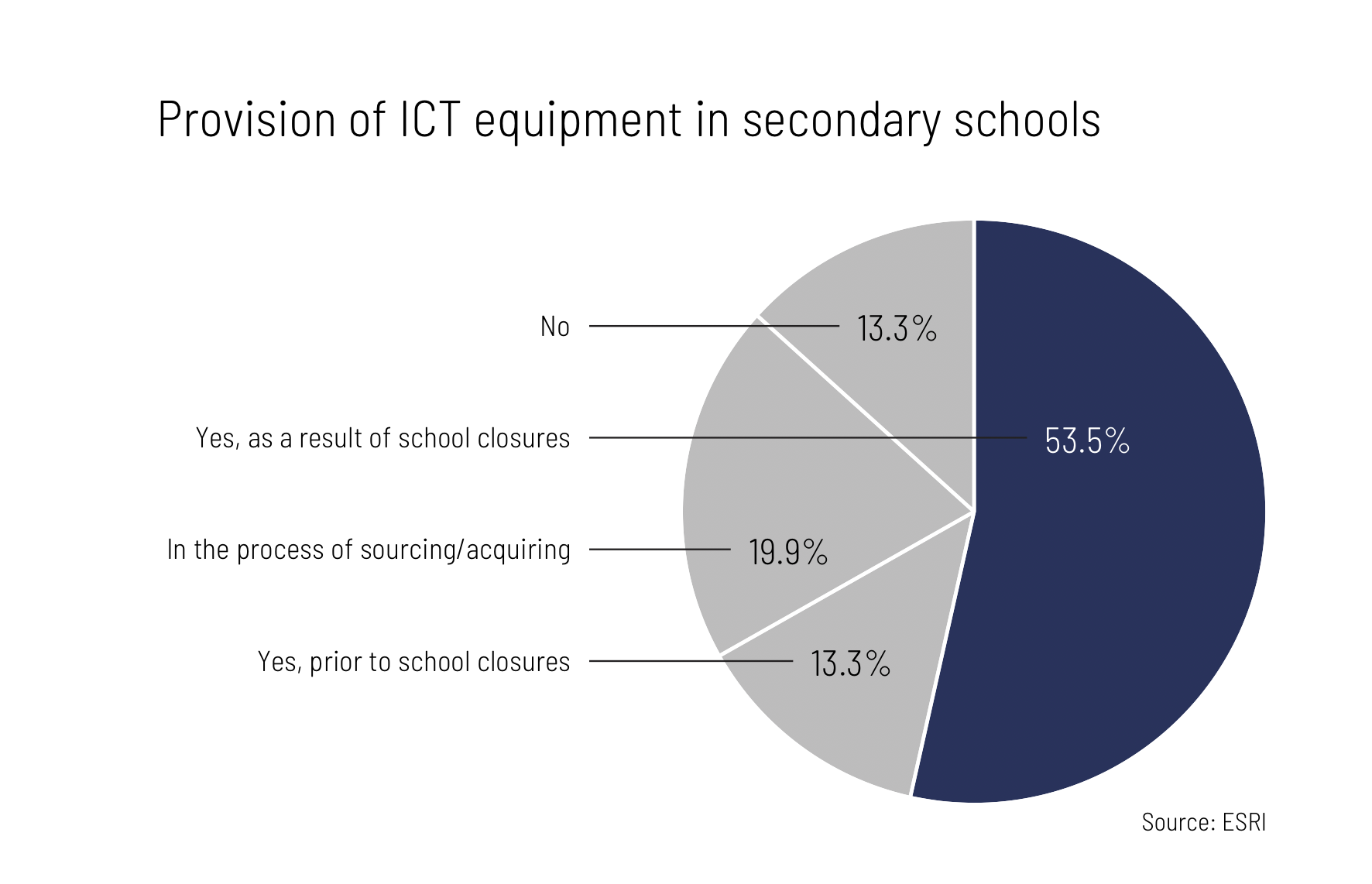
18 per cent of schools reported the use of live online video classes for “all classes”, while 38.9 per cent and 40.2 per cent used the method for “most classes” and “some classes” respectively. 3 per cent of schools reported no virtual live teaching. Differences in use and frequency of virtual live teaching across areas of varying broadband strength were apparent in the reportage, with 89.9 per cent of schools surveyed in good broadband coverage areas saying “all” or “most” classes were conducted through this method. In areas of lower broadband coverage, this figure drops to 61.8 per cent. In schools with lower income catchment areas, this figure falls again to 49.2 per cent, while higher income areas recorded a rate of 65.5 per cent.
Pre-recorded videos and audio and shared presentations were reported as being used in “some” classes by “almost all schools”, with platforms such as Kahoot and StudyClix reported to have been used by 90 per cent of schools. Paper-based learning such as worksheets and textbooks was used for “all classes” by 16.8 per cent of schools, for “most classes” again by 16.8 per cent and for “some classes” by 50.4 per cent. 15.9 per cent of schools reported no use of paper-based methods for remote learning. There was no difference found in the prevalence of paper-based methods by DEIS status or income/broadband characteristics of the areas surveyed.
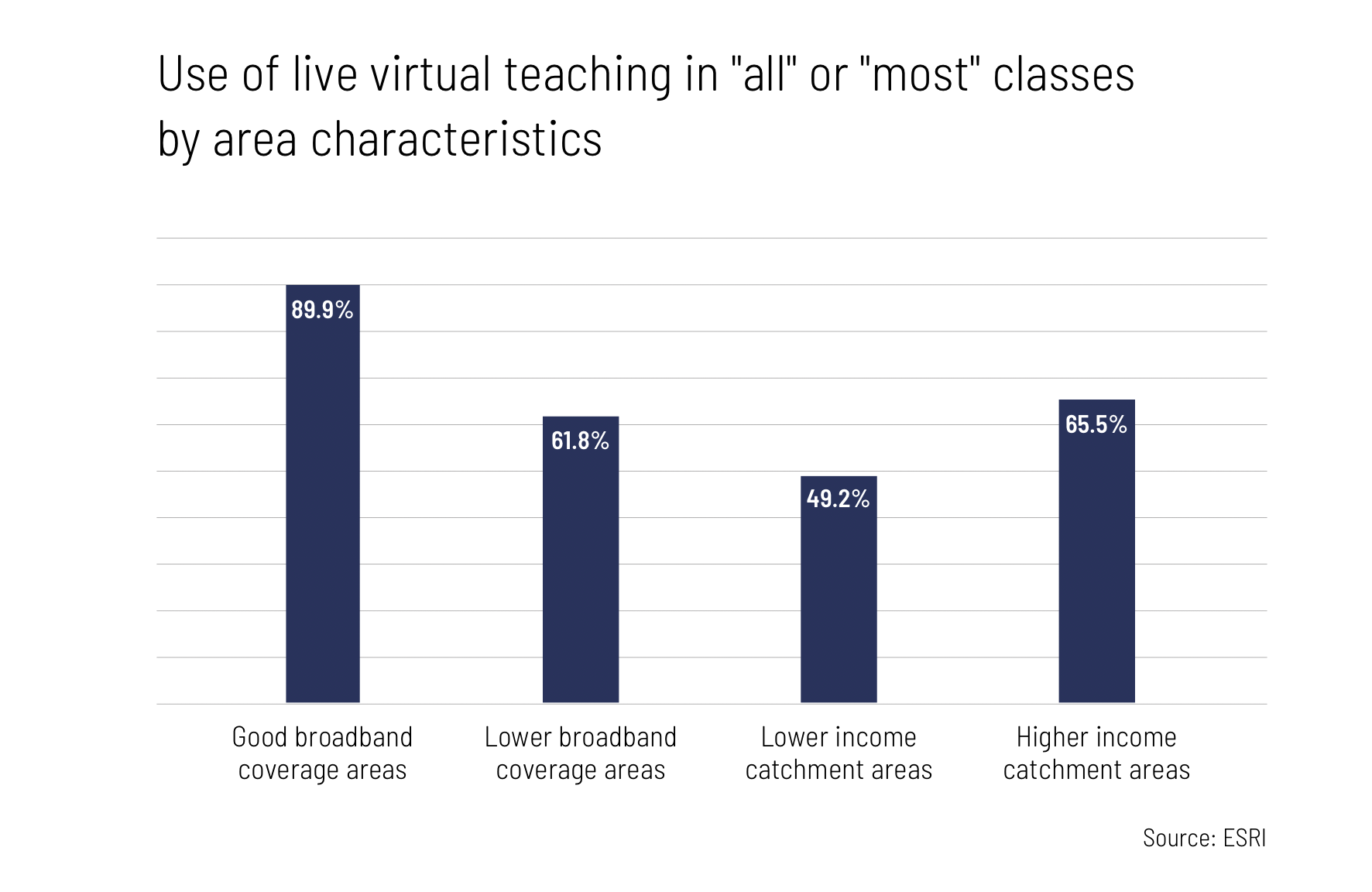
Phone-based communication was reported by 60.7 per cent of schools for at least “some” classes. A greater reliance on phones was evident in DEIS schools, with 82.5 per cent of those surveyed reporting use of phones for teaching, while 52.4 per cent of non-DEIS schools reported the same.
48 per cent of all schools surveyed reported a digital divide in relation to both broadband access and provision of ICT equipment across their students. 57.6 per cent of DEIS schools reported being limited in terms of broadband and equipment access. Just 37.1 per cent of schools in areas with high availability of high-speed broadband reported issues in both areas, while 56.7 per cent of schools in areas with lower coverage reported issues with both aspects. 58 per cent of schools in lower income catchment areas reported issues with both, compared to 35.9 per cent in higher income areas.
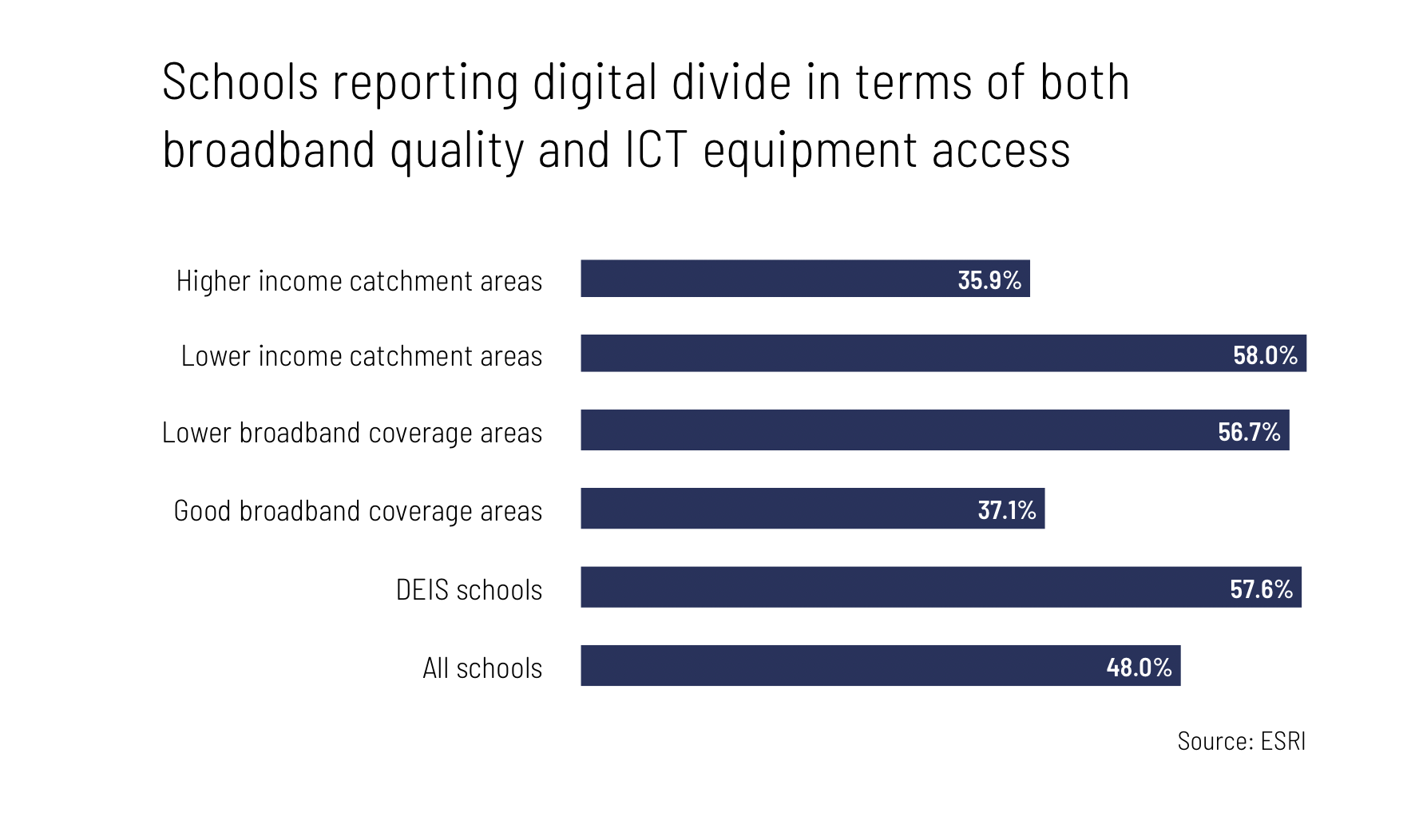
Across all schools, 33 per cent of schools reported participation in the free school meals programme during the shutdown, with just 2.6 per cent of schools who normally participate not participating in the programme during the lockdown. 95.5 per cent of DEIS schools reported participation but 4.6 per cent did not participate where they usually did. 8 per cent of non-DEIS schools reported participation, with 3.1 per cent of those who usually participate not doing so.
The report also notes that “a major factor impacting schools’ shift to distance learning was the lack of time to prepare, with the announcement that school buildings were to close made on the morning of 12 March and the closure commencing at 6pm that day”. Concluding, the report states that whole some schools, “iPad schools” in particular, “reported almost seamless transitions” to remote learning, but that the transition “impacted on student engagement and participation” and that teachers “experienced a range of difficulties in working from home”.
Students from socioeconomically disadvantaged background were found to be most affected, leading to fears that “one outcome of the lockdown will be a widening of the gap as pre-existing advantage and disadvantage are compounded”.



